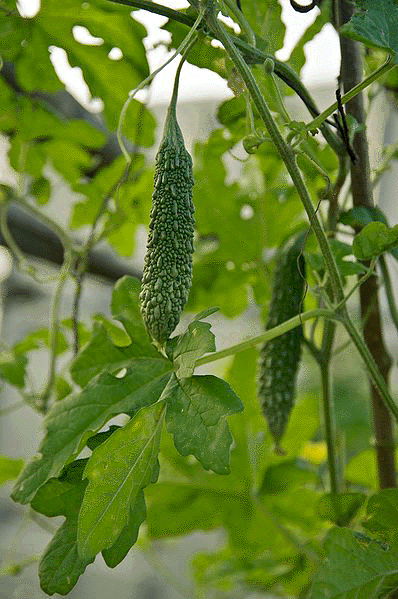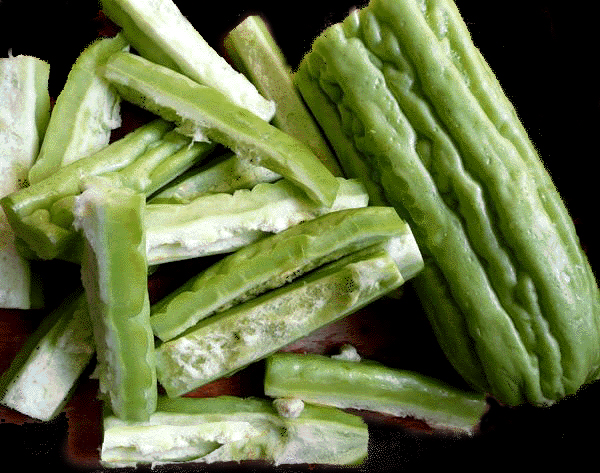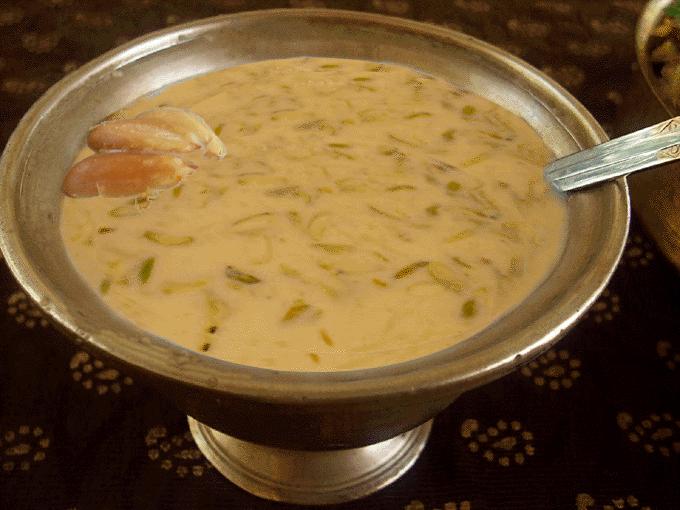
|
|
|
|
BY: SUN STAFF
 Apr 27, CANADA (SUN) — A journey through India: border to border, bhoga to prasadam. Today we begin a new segment in the Prasadam series, this time featuring one of our very favorite vegetables – Karela, or Bitter Melon. This delicious bitter gourd was a favorite of Lord Caitanya Mahaprabhu's, and was also greatly enjoyed by Srila Prabhupada. Although it is eaten all over India – in fact, all over the world – Bengali cuisine has particularly elevated the use of karela to an art form. In this three-part segment, we'll look at the many healthful benefits of karela, and a wide range of preparations made from it. By way of introduction to bitter melon, we begin with a relishable passage from Sri Caitanya-caritamrta.
In Antya lila 10.3-41, we read about a trip made by many devotees, going to Jagannatha Puri to see Sri Caitanya Mahaprabhu. Advaita Acarya led a party from Bengal, and a great many other glorious devotees also made the trip. Even though the Lord had ordered Nityananda Prabhu to remain in Bengal, in a mood of ecstatic love, he also went to Puri to see Mahaprabhu. In Caitanya-caritamrta Antya 10.13-20 we read this description: 10.13: "Raghava Pandita came with bags full of food prepared very nicely by his sister, Damayanti. 10.14: Damayanti made varieties of unparalleled food just suitable for Lord Sri Caitanya Mahaprabhu to eat. The Lord ate it continually for one year. 10.15-16: These are the names of some of the pickles and condiments in the bags of Raghava Pandita: amra-kasandi, ada-kasandi, jhala-kasandi, nembu-ada, amra-koli, amsi, ama-khanda, tailamra and ama-satta. With great attention, Damayanti also made dried bitter vegetables into a powder. 10.17: Do not neglect sukuta because it is a bitter preparation. Sri Caitanya Mahaprabhu derived more happiness from eating this sukuta than from drinking pancamrta [a preparation of milk, sugar, ghee, honey and yogurt]. 10.18: Since Sri Caitanya Mahaprabhu is the Supreme Personality of Godhead, He extracts the purpose from everything. He accepted Damayanti's affection for Him, and therefore He derived great pleasure even from the dried bitter leaves of sukuta and from kasandi [a sour condiment]. 10.19: Because of her natural love for Sri Caitanya Mahaprabhu, Damayanti considered the Lord an ordinary human being. Therefore she thought that He would become sick by overeating and there would be mucus within His abdomen. PURPORT 10.20: Because of sincere affection, she thought that eating this sukuta would cure the Lord's disease. Considering these affectionate thoughts of Damayanti, the Lord was very pleased."
The reference to Damayanti making dried bitter vegetables into a powder is very interesting. The explanation given is that she was concerned Lord Caitanya might become sick from overeating -- not surprising, given the inconceivable quantities of wonderful eatables she had packed for His journey! Specifically, she prepared the powdered bitter melon to alleviate mucus in the abdomen, or amla-pitta, acid indigestion. In Ayurveda, powdered bitter melon is a highly valued medicinal. Most often the fruits are dried and powdered, but also the seeds. The description from Antya lila mentions "the dried bitter leaves of sukuta", so obviously the leaves are also a valued medicinal. Karela, or sukuta, is typically used as a foodstuff in the diets of diabetics, because the fruit has a hypoglycaemic or insulin-like property, known as 'plant insulin'. It is well known to help lower sugar levels in the blood and urine, making it an important edible for balancing diabetes. Although Damayanti's dried bitter vegetable powder was specifically included in Raghava's bag for health reasons, such powdered vegetables can also be used for their goodness as a tasty ingredient in preparations. All sorts of powdered pulses and vegetables can be added as a flavorful addition to rice, dal or sabji, and many cooks keep a ready quantity of such powders on hand so they can quickly prepare flavorful foods. In the segments to follow we will explore many excellent recipes for Karela preparations of all kinds, from beverages to frieds, savouries and sabjis. We'll begin, however, with a preparation that is perhaps the most surprising variation of all – bitter melon used to make a sweet dish. Just as Sri Caitanya extracts the purpose from everything, including Damayanti's offering him bitter foods out of her great affection for Him, the goodness of bitter melon can be extracted even in the form of a sweet dish. And we're not referring here to a sweet and sour dish – another traditional way of cooking karela sabjis. This is actually a milk sweet using bitter melon.

Sometime around 1994, we were served an amazing sweet preparation on Gaura Purnima at the ISKCON Vancouver temple. The devotee who ladled it onto our plates did not describe the preparation by name, but simply said it was one of Srila Prabhupada's favorite sweets. The devotee briefly explained that it was ghee-fried bitter melon in cashew kheer. The taste, texture, and aroma of this sweet was altogether amazing! We had never tasted anything remotely like it, and could easily imagine why it would be one of Srila Prabhupada's favorites. For many years we searched for this recipe – even writing to Kurma dasa (the chef), but he had never heard of it. He was also surprised to hear that a bitter food was being combined with a milk sweet, and agreed that it was a very unusual combination. For years, we tried to re-create this preparation, and although we duplicated the taste, we never quite managed to get the same remarkable consistency of bitter melon. Years later, we discovered the proper name of the dish: Kaddu Kheer, or Kaddu Ki Kheer. The dish seems to have originated in Hyderabad, where it is a very popular sweet. While it was quite easy to create the base of cashew kheer, the consistency of the bitter melon we were served at the Vancouver temple was so unusual. The pieces were somewhat stiff and spongy, but soaked through with kheer. They were also slightly crunchy, from the frying. Our best efforts at recreation were done by cutting the bitter melon into small pieces, ghee frying them for several minutes, then draining the pieces, and gently 'pounding' them with a mallet before returning them to the ghee until they were lightly crisped. This 'pounding' step and 2nd frying seemed to get the bitter melon closest to the right spongy quality. Once cooled, the pieces were mixed in with the kheer, and chilled. As you'll see in the recipe that follows, that's not quite the traditional method for making Kaddu Kheer, which generally calls for grating the karela, then frying it. While this makes a wonderful Kaddu Kheer, it's not the same consistency as the Vancouver temple preparation, so we don't know if there was a particular method of preparation that made it one of Srila Prabhupada's favorites. In Hyderabadi recipes, the term "kaddu" is used to describe several different vegetables, including karela (bitter melon), lauki (bottle gourd), and even pumpkin. While all of these make a nice Kaddu Kheer, the karela version is especially excellent because the bitter flavor is there. The 'bitter' in bitter melon comes from quinine that is contained in the white fiberous stuff inside the melon. (While referred to as a melon, karela is actually a member of the squash family.) As with all recipes for bitter melon, you can remove some or even most of the bitterness by salting the melon, then rinsing off with water before cooking. This should also be done before using karela in Kaddu Ki Kheer, but don't remove too much of the desirable bitterness.

| |